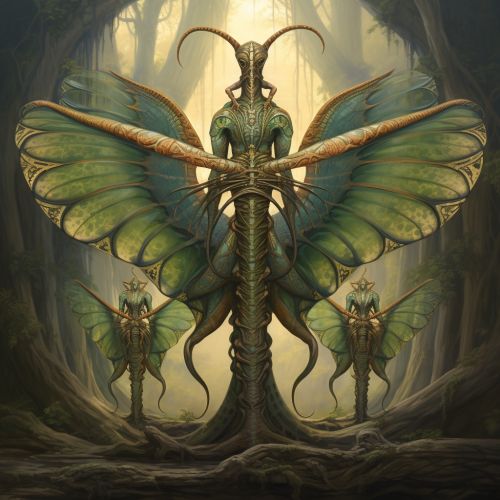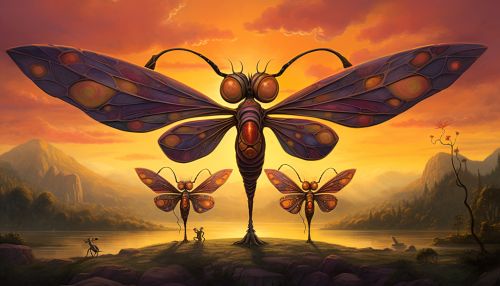Geryon
Mythology
Geryon is a figure from Greek mythology, specifically known for his role in the Twelve Labours of Hercules. He was a giant who lived on the far western edge of the known world, on an island known as Erytheia. Geryon is often depicted as a monster with three bodies and three heads, but descriptions of his appearance vary across different sources.
Origin and Etymology
The name 'Geryon' is of Ancient Greek origin, but its exact meaning is uncertain. Some scholars suggest it may be derived from the Greek word 'geron', meaning 'old man', while others propose a connection to 'geryones', a term used to describe long-lived beings. The figure of Geryon is believed to have originated from earlier Mesopotamian and Anatolian myths, which featured similar monstrous figures.
Description
In Greek mythology, Geryon is most commonly described as a giant with three bodies and three heads. This tripartite form is unique among Greek mythological creatures. He is often depicted with wings, and sometimes with the tail of a serpent. In some accounts, Geryon is said to have six hands and six feet, corresponding to his three bodies. His appearance, however, varies across different sources. In the Epic Cycle, for example, Geryon is described as a giant with one body and three heads.
Role in Mythology
Geryon is best known for his role in the tenth labour of Hercules. According to the myth, Hercules was tasked with stealing Geryon's herd of red cattle, which were considered a divine treasure. Geryon guarded his cattle with the help of his two-headed dog, Orthrus, and a herdsman named Eurytion. Despite these formidable guards, Hercules was able to slay them all and successfully steal the cattle.
Interpretations
Interpretations of Geryon's character and symbolism vary. Some scholars view him as a representation of the fear of the unknown, as he lived on the edge of the known world. Others see him as a symbol of excess and monstrosity, due to his unusual form. His defeat by Hercules has been interpreted as a metaphor for the triumph of civilization over chaos and barbarism.
Cultural Influence
Despite his relatively minor role in Greek mythology, Geryon has had a significant influence on later literature and art. He appears in Dante's Inferno, where he is depicted as a beast who transports Dante and Virgil down to the eighth circle of Hell. Geryon has also been featured in various modern works of fiction, including comics and video games.
See Also


